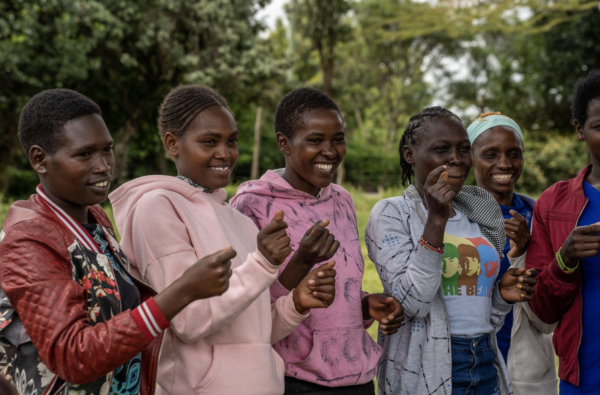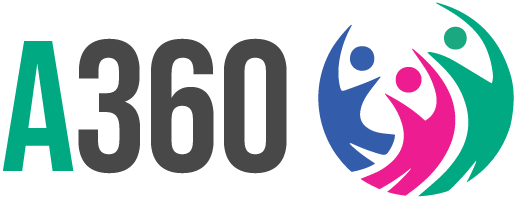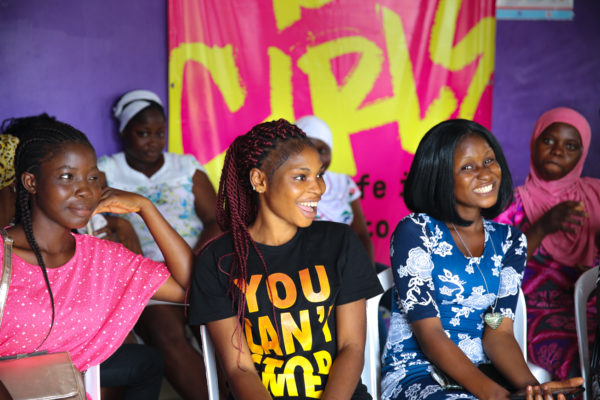By Meghan Cutherell (A360), Dharini Bhuvanendra (Kore Global) and Katherine Nichol (Kore Global)
The resonance of A360’s interventions have always been aided by our ability to offer more than just contraceptive service provision to girls. Including a life and/or vocational skills component in our SRH-focused programs allowed us to respond to what girls said they needed to secure a stable future for themselves. However, after years of implementing these multi-sectoral approaches, we realized we needed to do more. Our process to design more intensive economic empowerment intervention components that could be integrated with our existing SRH components highlighted an important gap in the sector. Though most agree on the need for integrated programming, there is a distinct lack of programmatic guidance on how to meaningfully integrate economic empowerment and SRH intervention components in adolescent girls’ programming.
In an effort to fill this knowledge gap, A360 and Kore Global, our gender technical advisory partner, have developed a knowledge brief to equip practitioners with the practical tools, guidance and resources to effectively and meaningfully design integrated programs. Grounded in case studies, the brief outlines a series of promising practices to advance the delivery of integrated programs for girls. Top tips for practitioners are highlighted below.
- Design curricula that focus on a foundational set of soft skills known for contributing to both economic empowerment and SRH outcomes
A foundational set of soft skills is a critical starting point for designing holistic programs. Building adolescent girls’ core soft skills – such as negotiation and problem-solving skills, as well as competency to manage stress and emotions – can enable girls to better navigate challenging situations in their personal and professional lives. An excellent example of this approach is BRAC’s Empowerment and Livelihood for Adolescents (ELA) program in Uganda, which offered a bundled package of hard and soft skills training, encompassing management skills, leadership, negotiation, and conflict resolution. An evaluation of the program found that development of soft skills was important in achieving key program outcomes. Program participants were more engaged in income-generating activities and less likely to have a child before they were ready, compared to the control group.
- Utilize group-based program models to provide the wraparound support necessary to achieve both economic empowerment and SRH outcomes
All programs analyzed during the review operate using a group-based approach, ranging from girls’ clubs to savings and loans groups. For decades, practitioners have employed these approaches creating a safe space for delivering content on multiple topics, including economic empowerment and SRH, resulting in a truly integrated program model. Some practitioners strategically leverage this by promoting topics particularly attractive to adolescent girls, such as savings and earning money, as an entry point for discussing more challenging (and sometimes less interesting) topics like access to contraceptives. For instance, the made access to the popular livelihoods training component of the program conditional on regular attendance at SRH sessions. In addition, groups have been proven to build social capital by fostering supportive networks that contribute to success across various life domains.
- Center girls’ voices, experience and leadership
Substantial evidence demonstrates that successful adolescent girl programs are built on an understanding of girls’ needs. Given the complexity of economic empowerment and SRH programming, it is vital to understand where girls are starting from and what they need to set them up for success. Girls should ideally be involved in all stages of the program cycle, from design to implementation, monitoring and evaluation. A360 utilized a human-centered design (HCD) process to integrate economic empowerment interventions within its existing SRH program. This involved meaningfully engaging adolescent girls, their mothers, husbands and other key stakeholders, in testing the program and adapting the final program design according to the evidence base.
- Take a lifecycle approach
A lifecycle approach takes account of the evolving capacities and interests of girls at different stages of adolescence. In both economic empowerment and SRH programming, certain interventions have been proven to be more or less effective and appropriate depending on the target age group. For instance, basic financial literacy skills are important for early adolescents, whereas vocational training and other employment-focused initiatives are better suited to older girls. Similarly, program designers should carefully consider what kinds of SRH information are appropriate and useful for different age groups, in terms of their capacity to make informed decisions about their reproductive health. One program that takes a lifecycle approach is the 12+in Rwanda, which was developed for early adolescent girls aged 10-14, who are typically more open to both risk-taking and influence from peers and other social networks. The program has developed a highly targeted, age-appropriate curriculum that is particularly relevant for the realities of early adolescent girls in Rwanda.
- Identify and actively engage key influencers
The context in which girls live, their key relationships and the social norms influencing their lives, play a significant role in contributing to achieving economic empowerment and SRH outcomes. Engaging with influential stakeholders, including parents, intimate partners and community leaders, is essential to gaining support for girls’ economic and SRH goals and aspirations. One intervention that effectively engaged key influencers is CARE’s IMAGINE program, which mobilized the entire community to support its primary objective of delaying first birth by working closely with adolescent girls’ collectives, young men’s social clubs and community management committees. IMAGINE’s endline evaluation found significantly higher rates of contraceptive use, greater health service utilization and participation in income-generating activities among the adolescent girl participants compared to the control group.

These tips serve as a starting point for effective integrated programming for girls. For in-depth understanding, explore the complete knowledge brief, which offers a wealth of additional resources and tips!






